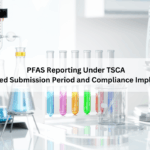In a significant move towards achieving the European Commission’s goal of being the first climate neutral continent by 2050, they have proposed a restriction on siloxanes D4, D5, and D6 on 16 May 2024. This decision aims to reduce up to 90% of their emissions, thereby significantly decreasing their environmental impact. However, the restriction will only start applying after 6 June 2026, providing industries with a transition period to adapt to the new regulations.
Cyclic Siloxanes, specifically D4, D5, and D6, are synthetic compounds known for their unique properties such as low thermal conductivity, low chemical reactivity, low toxicity, and heat resistance. These properties make them popular in various industries, leading to their widespread use in a range of consumer and professional products. Industries where siloxanes are found are:
- Cosmetics: Siloxanes are often used in cosmetics due to their ability to improve the texture and feel of cosmetic products, making them smoother and more easily spreadable.
- Dry Cleaning: Siloxanes are used in dry cleaning formulations, helping to clean fabrics without causing them to shrink or fade.
- Waxes and Polishes: The properties of siloxanes make them an ideal component for waxes and polishes, providing a shiny finish and protective coating.
- Construction: In the construction sector, siloxanes are used in sealants, paints, and coatings.
- Automotive: In the automotive industry, siloxanes are used in parts and lubricants.
- Electronics: Siloxanes are used in the electronics sector, for instance, as a protective encapsulating material for semiconductors.
- Medical: In the medical field, siloxanes are used in various applications due to their biocompatibility.
- Aerospace/Defence: Siloxanes are used in the aerospace and defence sectors, for example, in sealants and lubricants.
Despite their beneficial properties, siloxanes D4, D5, and D6 are known for their persistence and bio accumulative properties. This means they have the potential to build up in the environment over time, leading to potential long-term environmental impact. The restriction aims to address this issue by reducing their emissions by up to 90%.
The restriction proposal was prepared by the European Chemicals Agency (ECHA) in January 2019. It was a result of rigorous scientific research and analysis. The scientific committees for Risk Assessment and Socio-Economic Analysis supported the proposal in their 2020 opinions, highlighting the need for such a measure.
In conclusion, the European Commission’s restriction on siloxanes D4, D5, and D6 is a significant step towards environmental sustainability. Compliance management companies like Compliance XL can play a crucial role in helping businesses navigate these regulatory changes, ensuring they remain compliant while continuing to operate effectively. This underscores the importance of balancing industrial growth with environmental protection.
FAQs:
1.What are siloxanes D4, D5, and D6?
Siloxanes D4, D5, and D6 are synthetic compounds known for their unique properties such as low thermal conductivity, low chemical reactivity, low toxicity, and heat resistance.
2.Why has the European Commission adopted a restriction on siloxanes D4, D5, and D6?
The European Commission has adopted this restriction to reduce up to 90% of their emissions, thereby significantly decreasing their environmental impact.





